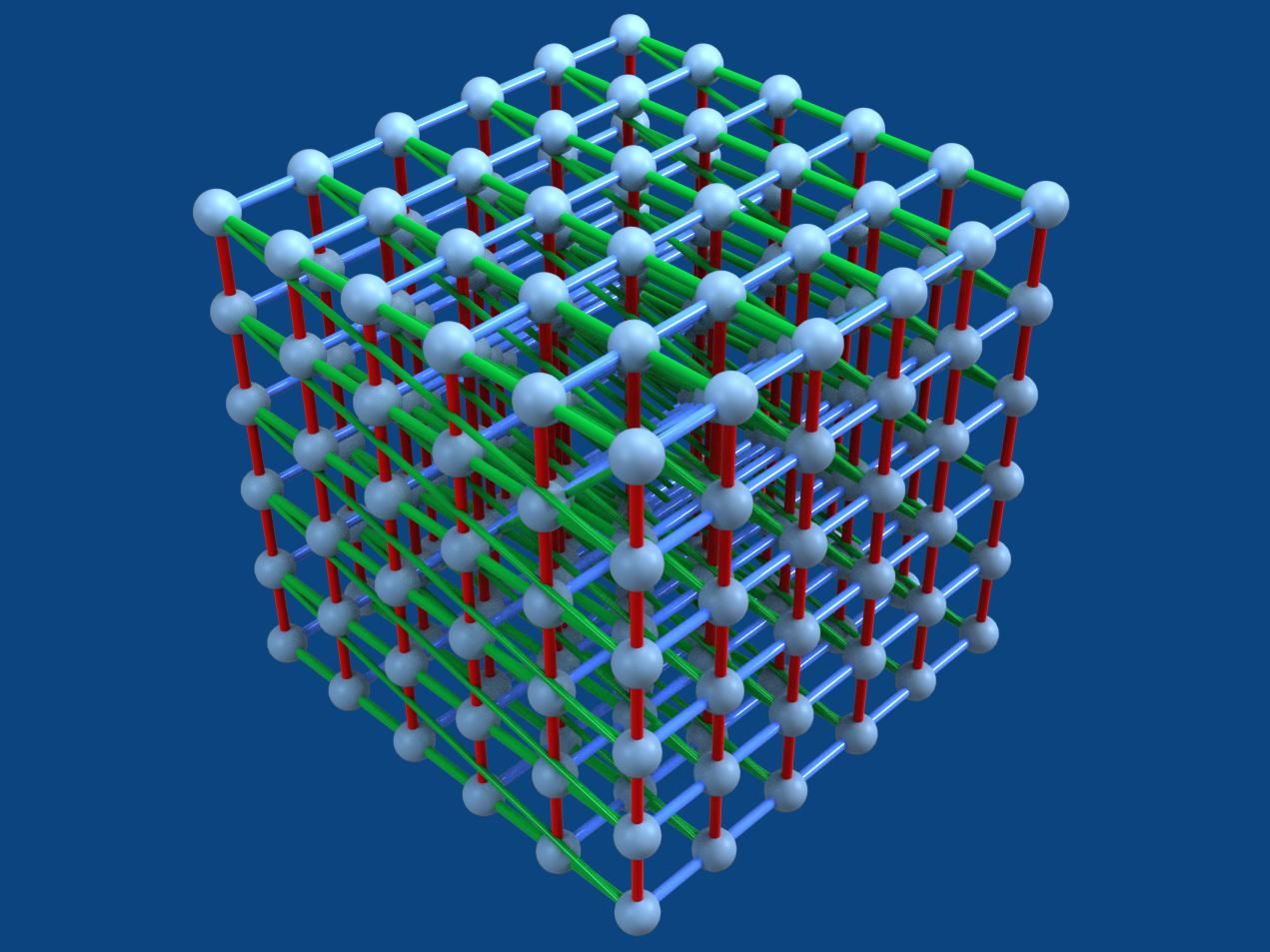Photonic Quantum Computer Claims Speedup “Advantage”
Quantum-powered cloud 7,800,000,000,000,000x as fast, for some problems, as a supercomputer
In this graphical representation of a three-dimensional entangled state synthesized by the computer Borealis, each vertex represents a squeezed-state qubit, and each edge represents the connection (a.k.a. entanglement) between the vertices.
A new photonic quantum computer takes just 36 microseconds to perform a task that would take a conventional supercomputer more than 9,000 years to complete. The new device, named Borealis, is the first quantum computer from a startup to display such “quantum advantage” over regular computers. Borealis is also the first machine capable of quantum advantage to be made available to the public over the cloud.
Quantum computers can theoretically achieve a quantum advantage that enables them to find the answers to problems no classical computers could ever solve. The more components known as qubits that a quantum computer has, the greater its computational power can grow, in an exponential fashion.
Many companies, including giants such as Google, IBM, and Amazon as well as startups such as IonQ, rely on qubits based on superconducting circuits or trapped ions. One drawback with these approaches is that they both demand temperatures colder than those found in deep space, because heat can disrupt the qubits. The expensive, bulky cryogenic systems required to hold qubits at such frigid temperatures can also make it a major challenge to scale these platforms up to high numbers of qubits—or to smaller and more portable form factors.
In contrast, quantum computers that depend on qubits based on photons can, in principle, operate at room temperature. They can also readily integrate into existing fiber-optic-based telecommunications systems, potentially helping connect quantum computers into powerful networks and even into a quantum Internet.
Scientists have developed quantum computers demonstrating quantum advantage using both cryogenic and photonic approaches. In 2019, Google argued its 53-superconducting-qubit Sycamore processor could carry out a calculation in 200 seconds that the company estimated would take Summit, the world’s most powerful supercomputer at that time, 10,000 years. Then, last year, researchers in China contended that photonic quantum computer Jiuzhang 2.0 could solve a benchmark problem roughly 1024 as fast as classical supercomputers.
A key drawback of Jiuzhang 2.0 was that it relied on a network of fixed mirrors and lenses. Therefore, it was not programmable, limiting its overall usefulness.
Now, in a new study, quantum computing startup Xanadu, in Toronto, reveals its device, named Borealis, may be the first fully programmable photonic quantum computer to display quantum advantage. “Borealis is the first machine capable of quantum computational advantage made publicly available to anyone with an Internet connection,” says study senior author Jonathan Lavoie, systems integration team lead at Xanadu.
In Borealis, qubits consist of so-called “squeezed states” consisting of superpositions of multiple photons in a light pulse. Whereas traditional qubits can, because of the surreal nature of quantum physics, exist in a state known as superposition where they can symbolize both a 0 and 1 of data, squeezed states can exist in states of 0, 1, 2, 3, or more.
Borealis can generate trains of up to 216 pulses of squeezed light. “It’s important to recognize that Borealis is not equivalent to a 216-qubit traditional device,” Lavoie says. “Since it uses squeezed-state qubits, it addresses a different class of quantum tasks than, say, a device based on superconducting circuit qubits or trapped ions.“
In experiments, the researchers tested Borealis on a task known as Gaussian boson sampling, in which a machine analyzes random patches of data. Gaussian boson sampling may have many practical applications, such as identifying which pairs of molecules are the best fits for each other.
In prior work, Jiuzhang 2.0 detected up to 113 photons out of 144 pulses of squeezed light. In the new study, Borealis detected up to 219 photons in its squeezed-light pulse trains, with 125 on average. All in all, the scientists estimated Borealis could perform Gaussian boson sampling more than 7.8 quadrillion times as fast as Fugaku, the fastest conventional supercomputer in the world in 2021.
One key advance seen in Borealis was the use of photon-number-resolving detectors. Prior machines used threshold detectors that are designed to distinguish only between “no photons detected” and “at least one photon detected.” The size of the computational problems a photonic quantum computer may tackle grows exponentially with the number of photons it can detect, so the photon-number-resolving detectors helped Borealis perform more than 50 million times as fast as previous photonic quantum computers, Lavoie says.
Xanadu has made Borealis available for use for everyone over the cloud. “We are also working with partners to make it more broadly available,” Lavoie says. “We hope that its public availability will stimulate even more research around quantum advantage and Gaussian boson sampling in general.“
Xanadu’s future research “is squarely focused on achieving error correction and ultimately fault tolerance, to unlock the most valuable problems in quantum computing,” Lavoie says. “Many of the technologies and lessons learned in building Borealis will be incorporated into our architecture for [future models].”
The scientists detailed their findings in the 2 June issue of the journal Nature.
- Photonic Quantum Computer Displays “Supremacy” Over ... ›
- First Photonic Quantum Computer on the Cloud - IEEE Spectrum ›
- In the Race to Hundreds of Qubits, Photons May Have "Quantum ... ›
- Linking Chips With Light For Faster AI - IEEE Spectrum ›
- Two of World’s Biggest Quantum Computers Made in China - IEEE Spectrum ›
Charles Q. Choi is a science reporter who contributes regularly to IEEE Spectrum. He has written for Scientific American, The New York Times, Wired, and Science, among others.
